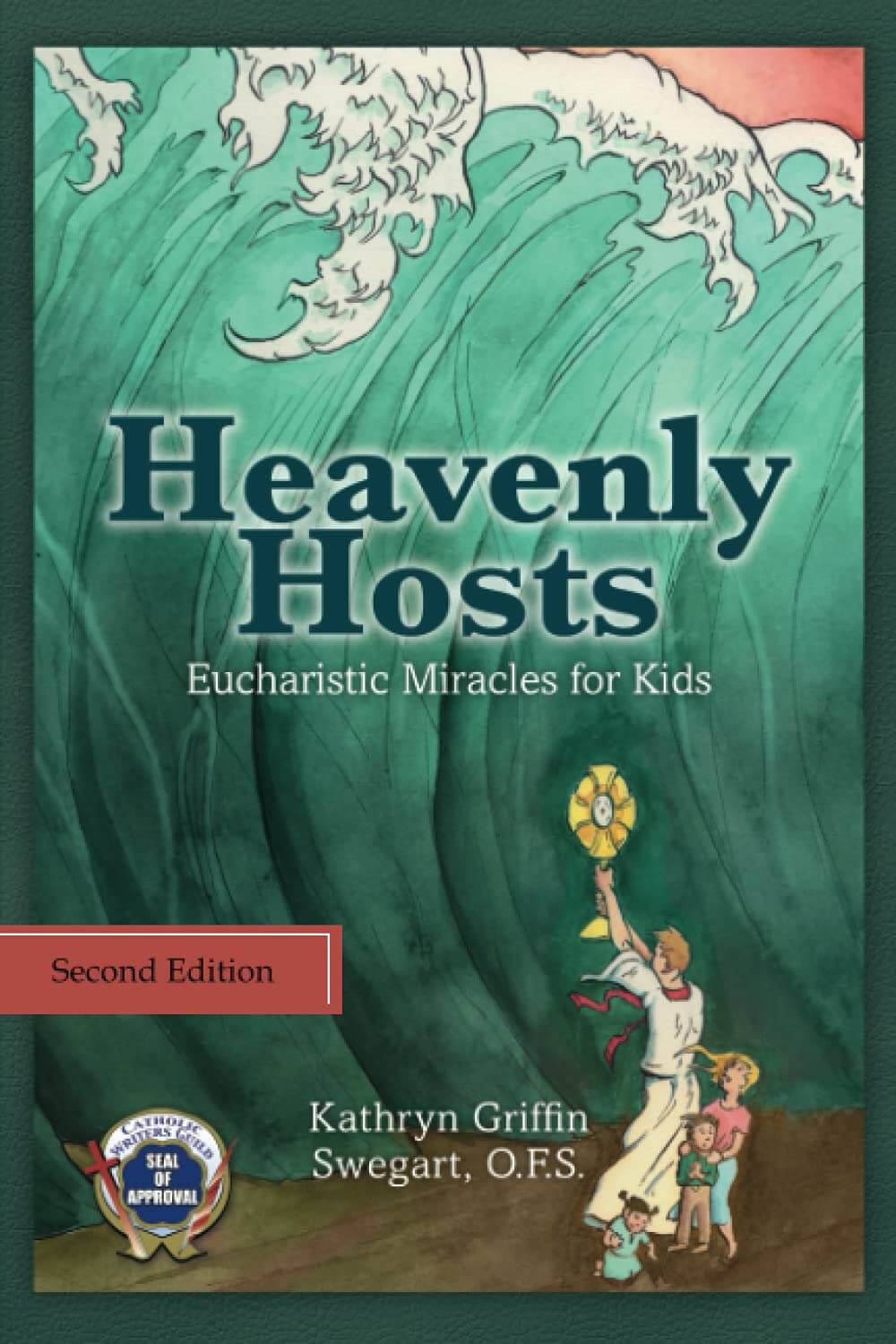There are hundreds of ways that God can reach us through the Eucharist. Before reading, I thought this book would be focused more on the Eucharistic miracles where blood and flesh are witnessed in a remaining host. That type of miracle is the one I associate with the phrase “Eucharistic miracle.” I was pleasantly surprised to see the many events in this book. Kathryn Swegart, O.F.S., chose a variety of miraculous events, from a donkey showing reverence to a consecrated host to a priest stopping a tsunami! Readers young and old will be on the edge of their seats to see in what way Jesus chooses to reveal Himself and His power.
This book is a lovely introduction to understanding the miracle of the Eucharist. It provides 13 brief stories based on real, documented events from Church history. The power of the Eucharist unites all the stories and leaves the reader in awe of God’s wondrous gift to us. The book includes the miracles of Skete, Lanciano, Rimini, Assisi, Kranenburg, Krakow, Avignon, La Rochelle, Pibrac, Tumaco, Fatima, and Buenos Aires. It also includes a lesson from St. Philip Neri.
The writing and tone are what you would expect from a younger middle grade book. It feels like an Aesop’s Fables or a fairy tale collection meets the reality of the Church. The stories are only a few pages long, with straightforward writing and uncomplicated plots. There is a formula that involves some sort of struggle, usually involving lack of faith, a revelation from Jesus in the Eucharist, and the conversion of the doubtful and/or resolution of the struggle. The stories never get bogged down by details and are perfect for younger readers – not to mention enjoyable for older. The book would be great to read to children who are ready to move beyond picture-heavy books but not quite ready for multichapter books. I can easily imagine reading one story a night at bedtime – although children usually want the same one every night for a while – and inspiring faith and curiosity about the Real Presence. Even I had moments of disbelief while reading (“No way that happened!”), but everything in this book is based on a real event. God can do anything.
Swegart includes at the end modern photographs of several churches and locations mentioned in the book. The pictures add another ‘proof’ to help encourage children to learn about the miracles possible in the Church. I doubt these stories would have appeal to non-Catholics – although Eucharistic miracles are a chance for evangelization and conversion. But it would be a great gift for a Catholic family with young children. It advertises itself for First Communicants, and I agree: it cannot be overstated that Transubstantiation is a difficult concept to teach to Catholics, young or old. Many deny the reality of the Body and Blood of Christ present in the Eucharist. This accessible book can help First Communicants and their families see what a miracle the Eucharist truly is.



